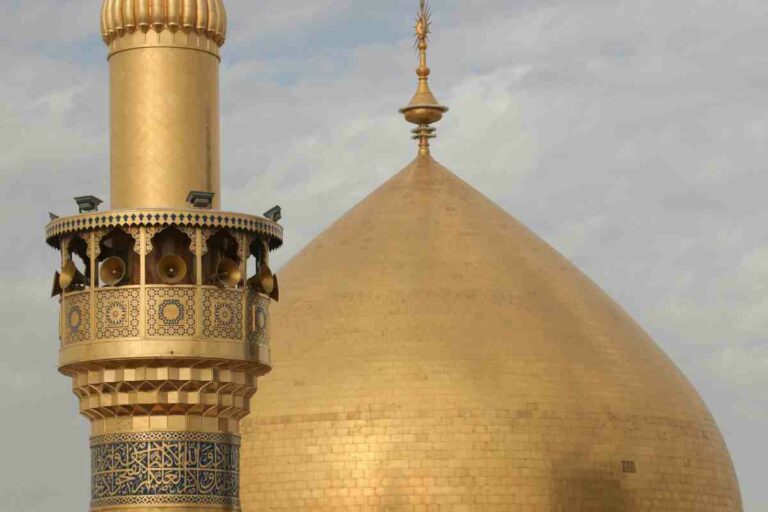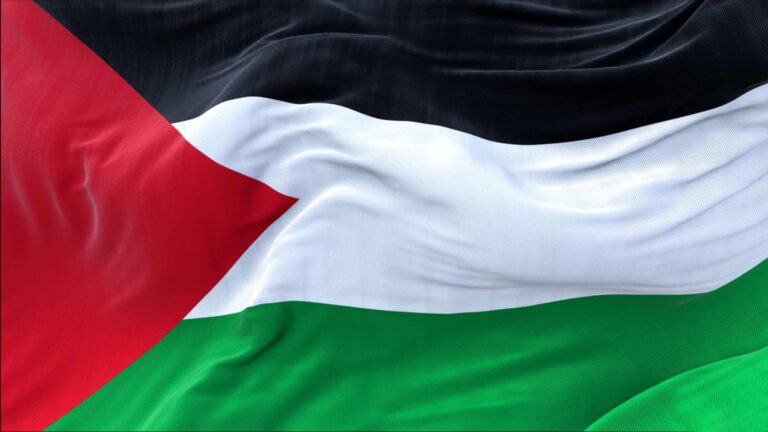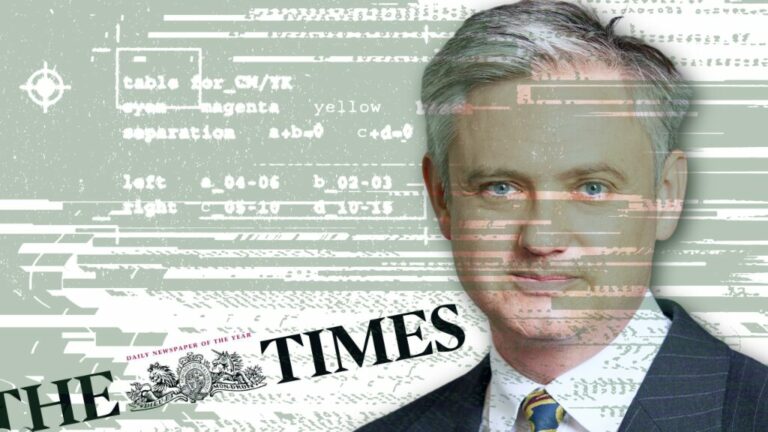Summary
- Concerns
- Conclusion
Summary of Channel:
The government initiative Channel states its aims as ‘protecting vulnerable people from being drawn into terrorism.’[1] The revised 2012 Channel guide shifts the focus from safeguarding children, to both children and adults. It is embedded within Prevent strategy, one of the four main work streams of the overall UK strategy for Countering Terrorism, known as CONTEST. Prevent aims to stop people becoming or supporting terrorists.
Individuals are ‘channelled’ away from violent extremism through interventions involving counselling, faith guidance, civic engagement, support networks and mainstream services (HM Government, 2010). A referral is made by a neighbour, school teacher or social worker to a Channel police officer. The referral is then screened by the police practitioner’s ‘professional judgment’ to make an initial assessment. The proceeding assessment is informed by multi-agency information gathering, resulting in a decision as to whether the individual referred is:
- Vulnerable to being drawn into terrorism (therefore the Channel program is appropriate).
- Should be referred to a different support mechanism.
- Should exit the process.
Siobhan Peters, Director of Prevent, Office for Security and Counter-Terrorism writes, ‘Terrorism is a real and serious threat to us all. Preventing people from being drawn into terrorist-related activity and ensuring they are given advice and the right support through Channel, is an important part of our response.’
The presentation of these schemes is seemingly valid, promoting early intervention in order to counter terrorist movements before they become a threat. However, the language – ‘safeguarding’ and ‘protect’ manipulates the actual Channel process. These schemes result in targeting Muslim school children as young as 3 years old.[2]
A report published by the Islamic Human Rights Commission in 2009 wrote that, ‘the Prevent agenda unhelpfully conflates the issues of community cohesion and community services delivery with issues of intelligence gathering and counter-terrorism. By doing so, the Government adopts a position that the British Muslim community can only be viewed through the single prism of counter-terrorism efforts.’[3]
Concerns about Channel
1. Discriminatory referrals.
The predominant concern of the Channel process is at its inception. Referring any suspect individual is unsound as there are no guidelines as to what constitutes vulnerability. The individual making the referral and/or the police practitioner processing it could be misguided or malicious. Once an individual is referred, with or without sufficient evidence, they are investigated, interviewed, and kept on police records. This has an effect on that individual, their family and the wider community.
The leading role of the police in the Channel program is cause for concern. The police are not expert specialists in safeguarding children. The majority of referrals concern Muslims, yet police officers are not educated or sufficiently informed about Islam, thus malpractice may occur.
A local Prevent practitioner criticised the methods of Channel, stating:
‘All Channel coordinators are police sergeants… the wrong move… If you want to give a message that this is about caring for young people, you don’t put in place people whose role this is not, you put in people involved in safeguarding young people.’[4]
2. Who is Channel targeting?
Channel is careful not to make allusions to Islam or Muslim communities in the guidelines. However, it is predominantly this community that Channel deals with. Githens-Mazer and Hickman et all have shown that the strategy risks labelling the Muslim community as ‘suspect.’ HM Government released a statement saying:
‘It is realistic to accept that some problems have arisen, from the feeling of some parts of the community that they have been victims of state ‘snooping.’ (HM Government 2011 ‘Prevent Strategy’)
The statement does not specify it is Muslim communities that are suffering from intrusive snooping and invasion of privacy. Why is it that the government evades focus on the specific people being affected, but continues to blanket ‘communities’?
The North West Counter-Terrorism Unit, in conjunction with Prevent, sent undercover police officers posing as Muslims to a number of Mosques in Manchester with the intention of tackling terrorism. There had been no concern of terrorist or even extremist activity taking place in these Mosques. This unjustifiably associates Mosques with suspected extremist and terrorist activity. In response to this action, which is supposed to be in line with the Channel strategy of early intervention, Yasmin Dar, a member of the Greater Manchester Police Mosques and Community Forum said:
‘It’s alarming… I’ve not heard of any cases of undercover officers going into churches or synagogues, so why a particular faith?’ [5]
The actions taken against Muslims are strengthening the stereotype that Muslim communities are suspect, making Islam synonymous with terrorism.
Statistics show that since the scheme was launched in 2005, 2,653 referrals have been made, 67% involving concerns of Islamic extremism. The majority of referrals are linked Muslims, with over 750 cases relating to school children. Of these 750 referrals, 113 were reports of children under the age of twelve. These figures constitute a worrying reality, more Muslim children are referred to Channel than far right radicals (400 referred cases, only fourteen percent.)[6]
David Cameron made clear the terrorist threat is directly associated with Islamist extremism, but is not synonymous with Islam as a peaceful religion…
‘Islam is a religion, observed peacefully and devoutly by over a billion people. Islamist extremism is a political ideology, supported by a minority.’[7]
He acknowledged the difficulty the public faces when trying to differentiate from an uninformed position. Cameron states, ‘It’s vital we make this distinction between the religion and the political ideology. Time and again, people equate the two. They think whether someone is an extremist is dependent on how much they observe their religion.’[8] The legislation that follows is not in line with this ideology. In order to counter terrorism, Cameron advises that, ‘instead of ignoring this extremist ideology, we – as governments and societies – have got to confront it, in all its forms.’[9]
Cameron has shown his ignorance regarding Islam in these statements. Although it is important to understand the divergence of extremist political actions from Islamic teachings and principles, Islam and politics are inextricably linked. Thus, Cameron’s implication that ‘the political ideology’ is Channel’s area of focus, allows authorities to investigate and criminalise any Muslim that voices a political opinion or affiliation.
It is clear there is in fact no differentiation between the so called ‘political ideology’ and the ‘peaceful’ religion of Islam in the eyes of this legislation. By branding Islamic political affinity with extremism, the government is fuelling the mentality of suspicion and discrimination against Muslim communities. Channel becomes a practical program to implement Islamophobia through the guise of a legal, government implemented program.
This is both hypocritical and ironic. Those devising and implementing these policies are politicians themselves, and it is their ‘political opinion’ that allows them to determine such Islamophobic legislation.
Despite the threat to society from members of the far right, such as the EDL (English Defence League) and the BNP, they are not targeted by Channel, with only 14% of referrals concerning the far right. The brutal attacks on Muslims by these groups are not classed as terror attacks, further emphasising the discrepancy between the treatment of Muslims and non-Muslims in Britain. There have been a number of bomb attacks on Mosques in the West Midlands. Metro reports that on June 22, ‘the remains of a home-made explosive were discovered outside a mosque in Walsall, while a nail bomb exploded near a mosque in Tipton on July 12.’[10]
3. Invasion of Privacy
Channel requires sharing personal information to ensure the full range of an individual’s vulnerabilities are identified and addressed. Channel is sharing personal information of individuals who have no terrorist association. Does this constitute a breach of personal privacy and a government scheme to spy on members of a community? As it is members of the Muslim community who are predominantly referred, what parameters can be implemented to distinguish those at risk from those who are practising Islam? Without sufficient evidence, sharing personal information of citizens unaware they are being monitored constitutes an invasion of privacy of innocent members of society.
Shami Chakrabarti, Director of Liberty, believes Channel is ‘information-gathering directed at the innocent and the spying is directed at people because of their religion, and not because of their behaviour.’[11]
However, the Home Office said: ‘Any suggestion that Prevent is about spying is simply wrong. Prevent is about working with communities to protect vulnerable individuals and address the root causes of radicalisation.’[12]
The Guardian reported that ‘the information the authorities are trying to find out includes political and religious views, information on mental health, sexual activity and associates, and other sensitive information. Other documents reveal that the intelligence and information can be stored until the people concerned reach the age of 100.’[13]
Channel, a £140 million program, is reported by individuals directly involved in the running on Prevent as ‘involving gathering intelligence about the thoughts and beliefs of Muslims who are not involved in criminal activity.’[14] Channels aim to protect vulnerable people is paradoxical. It is a tool to protect the perceived vulnerability of the community from extremist Muslims. This contradicts human rights and equality.
4. Lack of clarity in Channel policy and guidelines.
There is a lack of robust guidelines concerning how ‘to protect vulnerable people from being drawn into terrorism.’[15] It is unclear who could or should be referred to Channel. What constitutes a vulnerable person, and by whose standards? There are not clear cut answers, Channel referrals are based on a judgment call. Chodhury and Fenwick note that ‘this difficulty of making an assessment as to whether to make a referral to Channel was a central concern among practitioners and community organizations.’
According to a local authority official ‘there was a real sense in the Muslim community that if one of the kids goes out in the playground and says an Arabic word, they are going to be referred to Channel.’[16]
No clear definitions are given of the terms ‘extremist’ and ‘radical.’ If there is no clarified definition of these terms, Channel is functioning on a personal perception basis. Therefore there can be no control over individual discrimination and prejudice.
Khalida Khan, Director of An-Nisa Society, states, ‘The loose definitions also leave the strategy open to interpretation at the risk of being counterproductive. It gives officers substantial leeway in implementation with no accountability to Muslims, who are the subject of it.’[17]
5. Breaking down the relationship between Muslims and Public Bodies.
The ambiguous nature of implementing Channel constitutes a serious barrier in relationships between Muslims and police and public government bodies. Government encouragement to be on the lookout for signs of radicalisation and extremism stigmatises Muslim members of society. This mentality instils suspicion on the part of public bodies and fear on the part of Muslim members of society.
Members of Muslim communities have opined that, ‘The approach is wrong in principle because there should not be an approach to tackling violent extremism, which smears a whole community as potential terrorists.’[18]
The psychological implications of Channel effect everyday relationships between Muslim and non-Muslim members of society. Choudhury and Fenwick note that ‘one youth worker feared Channel has created a culture where some people are afraid to engage with Muslims in case they are terrorists.’[19]
Khalida Khan states, ‘the government’s approach to dealing with terrorism by targeting the whole Muslim community as ‘potential terrorists’ in its Prevent Strategy is flawed and fraught with perils. Rather than creating community cohesion and eliminating terrorism it has the potential to create discord and inflame community tensions. We believe this unprecedented strategy constitutes an infringement of civil liberties and human rights.’[20]
6. Channel in British schools.
School teachers are seen as having a very important role in the Channel program. Teachers are asked to identify children who are perceived to be vulnerable to radicalisation. Implementing surveillance at schools does not seem to be a means to prevent danger, but is paradoxically implementing danger as it risks branding young children in a negative light. Furthermore, asking teachers to critically observe children may instil parental resentment and bitterness towards the government and police forces that may not already exist. A survey conducted by Ipsos MORI (2011) showed that a number of schools disagreed with the policy.
Christine Blower, acting general secretary of the National Union of Teachers, said: ‘For the objectives of government guidance to be achieved, trust has to be maintained in schools. No teacher will ignore obvious information about a specific, real threat, but it is vital that teachers are able to discuss with and listen to pupils without feeling that they have to report every word.’[21]
Mary Bousted, general secretary of the Association of Teachers and Lecturers, said: “We have a duty of care to try to prevent any young person descending into any kind of illegal activity which could ruin their lives. But teachers are not trained to deal with radicalisation. We’re not spy-catchers.”[22]
Despite a lack of any satisfactory guidelines concerning a Channel referral for teachers, the Government has provided a toolkit entitled ‘Learning together to be safe.’ These guidelines attempt to provide means for teachers to help prevent violent extremism yet they are over simplified and generalised advice for identifying vulnerability.
They suggest teachers should identify children who have opinions on: ‘Political ideology — use of political propaganda that describes political systems and countries as ‘Kufr’ or anti-Islamic, and expressing the need to replace them with ‘The Islamic system’, or Caliphate…’ Suspended morality…; Conspiratorial mindset and ‘westophobia’…Ultra conservative outlook…’[23]
Ambiguous generalizations provide scope for misguided referrals, unnecessary government work and unfounded intrusion into the lives of these children and their families.
An-Nisa Society has highlighted important questions that must be addressed in the face of such vague parameters:
• What are the ‘appropriate mechanisms?’
• What will happen to a child identified as a ‘potential terrorist?
• Where are the Muslim voluntary sector agencies that will ensure that the child is dealt with appropriately?
• What safeguards are there to ensure that a child or young person is not wrongly labelled for life?
• Who will make these agencies and schools accountable?
• Where are the Muslim voluntary sector support services that can help Muslim families placed in such a situation with, for example, counselling, advocacy and legal help and so on?[24]
With the absence of sound answers to these important questions, Channel runs the risk of being counterproductive in its mission to safeguard vulnerable people from being drawn into terrorism. By creating and encouraging suspicion of Muslim communities, Channel does not create cohesion in schools, only fragmentation.
7. Increasing Islamophobia and Discrimination against Muslim Communities.
Channel instils the far right ideology that all Muslims could be terrorists and a risk to society. The Government confirmation of this ideology through Channel seems to contribute to the already growing speculation around Muslim communities as radicalised and dangerous. By implying that Muslim communities must be supervised by the community at large through Channel, the government is not only encouraging a degree of ‘spying’ but further institutionalising the anti-Muslim mentality by associating Muslims with terrorism through government policies.
The Guardian published an article on 16 October 2009 quoting Shami Chakrabarti, ‘Channel is the biggest spying program in Britain in modern times and an affront to civil liberties.’[25]
Concluding Remarks
It will be more productive for the government to build trust, and address the needs of the Muslim community in the interest of social justice, rather than through the lens of anti-terrorism.
In order to do this, Islamic grass root organizations must be involved in procedures implemented by the government. The government should prioritise addressing Islamophobia and Institutional anti-Muslim discrimination within mainstream agencies such as within central government, local authorities, health services, police and others. This will aid the ideological shift from branding Muslims as ‘suspect’ towards a cohesive society that tackles the threat of terrorism from a homogenous stand point. This will be more constructive and helpful in the fight against violent extremism and will get Muslims on board as equal partners.[26][24]
Bibliography
Awan, Imran., ‘”I Am a Muslim Not an Extremist”: How the Prevent Strategy Has Constructed a “Suspect” Community,’ Politics and Policy, 40:6 2012
Cameron, David. Full transcript, Speech on radicalisation and Islamic extremism, Munich. 5 February 2011
http://www.newstatesman.com/blogs/the-staggers/2011/02/terrorism-islam-ideology
Chakrabarti, S. http://www.guardian.co.uk/uk/2009/oct/16/anti-terrorism-strategy-spies-innocents
Choudhury, T and Fenwick, H. ‘The Impact of counter-terrorism measures on Muslim communities,’ Equality and Human Rights Commission, 72, 2011.
Khan, K. ‘Preventing Violent Extremism (PVE) and PREVENT: A response from the Muslim Community.’ An-Nisa Society, 2009
Peters, Siobhan and Denhols, Craig, Channel: Protecting vulnerable people from being drawn into terrorism. HM Governmet, 2012.
Whitehead, T. Security Editor. ‘Hundreds of Children identified as Extremist risk.’ Telegraph, 22 July 2013. http://www.telegraph.co.uk/news/uknews/terrorism-in-the-uk/10193557/Hundreds-of-children-identified-as-extremism-risk.html
Endnotes:
[1] S. Peters and C. Denhols, Channel: Protecting vulnerable people from being drawn into terrorism. HM Governmet, 2012, 3
[2] Telegraph Article, 22 July 2013 stated ‘More than a hundred children aged under 12, including a three year old, have been identified as future extremists or at risk of radicalisation.’
[3] ‘Preventing Violent Extremism; Response by the Islamic Human Rights Commission to UK Government Consultation,’ Briefing, October 2009, https://www.ihrc.org.uk/publications/briefings/9108-preventing-violent-extremism-response-by-the-islamic-human-rights-commission-to-uk-government-consultation-september-2009
[4] T. Choudhury and H. Fenwick. ‘The Impact of counter-terrorism measures on Muslim communities,’ Equality and Human Rights Commission, 72, 2011. 65
[5] I. Awan, ‘”I Am a Muslim Not an Extremist”: How the Prevent Strategy Has Constructed a “Suspect” Community,’ Politics and Policy, 40:6 2012, 1168.
[6] T. Whitehead, Security Editor. ‘Hundreds of Children identified as Extremist risk.’ Telegraph, 22 July 2013. http://www.telegraph.co.uk/news/uknews/terrorism-in-the-uk/10193557/Hundreds-of-children-identified-as-extremism-risk.html
[11] S. Chakrabarti. http://www.guardian.co.uk/uk/2009/oct/16/anti-terrorism-strategy-spies-innocents
[15] Peters, Siobhan and Denhols, Craig, Channel: Protecting vulnerable people from being drawn into terrorism. 3
[16] Choudhury, T and Fenwick, H. ‘The Impact of counter-terrorism measures on Muslim communities,’ Equality and Human Rights Commission, 72, 2011. 63.
[17] K. Khan. ‘Preventing Violent Extremism (PVE) and PREVENT: A response from the Muslim Community.’ An-Nisa Society, 2009. Pg. 4
[20] K. Khan. ‘Preventing Violent Extremism (PVE) and PREVENT: A response from the Muslim Community.’ An-Nisa Society, 2009. Pg.3
[21] C. Blower. http://www.teachers.org.uk/node/8531







